blog
Book Review: Tickety-Boo by Charles H. Traub
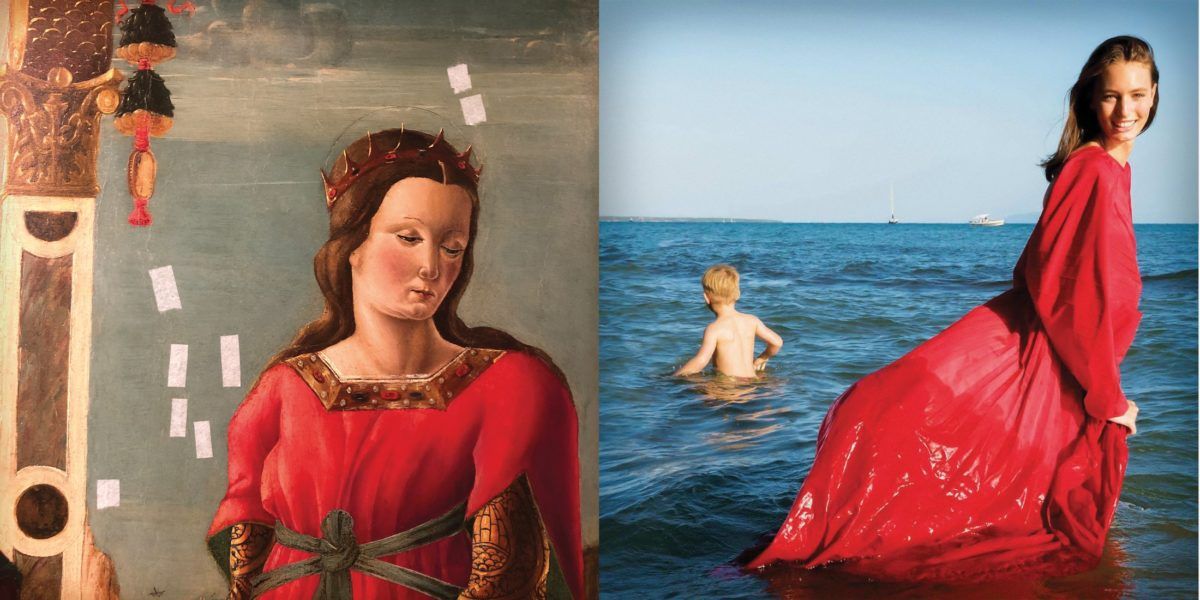
From ‘Tickety-Boo © Charles H. Traub
One of the things many people admire and appreciate about Charles H. Traub‘s work is this: one can look at an image of his which immediately conjures, say, the work of Botticelli, or Michelangelo, or Diane Arbus or Robert Frank’s (and others who reside in the collective mind’s-eye of the world). And at the same time, one can also conjure an image they’ve taken themselves, on their own phone or camera – looking up at the sky between two paired umbrellas over their own patio tables. The work is elevated and also accessible; such is the tightrope walked by many an artist.

From ‘Tickety-Boo’ © Charles H. Traub
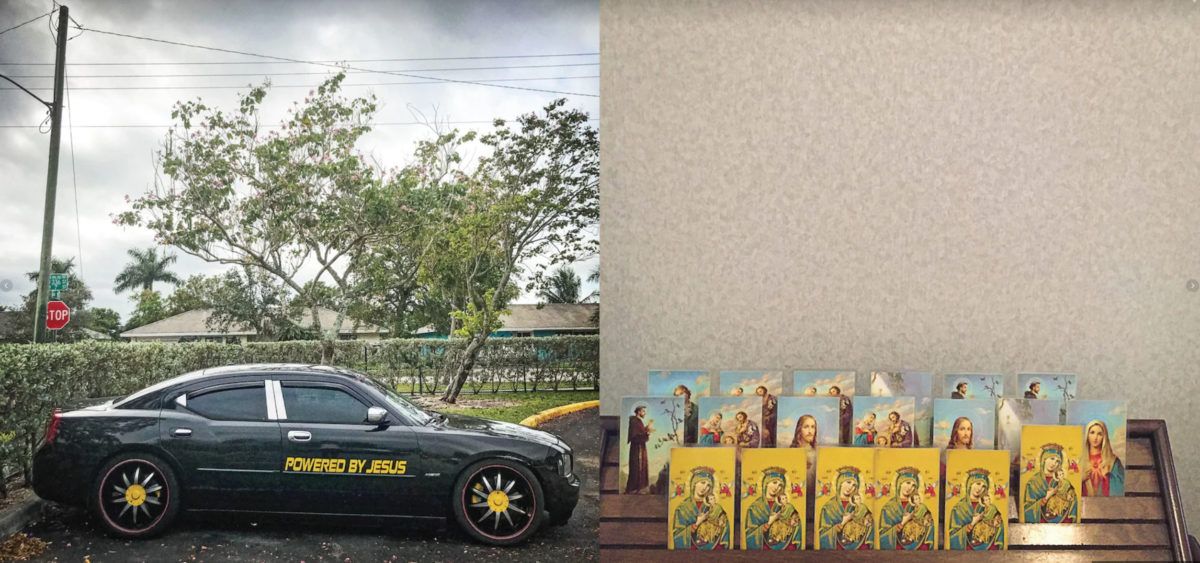
From ‘Tickety-Boo’ © Charles H. Traub
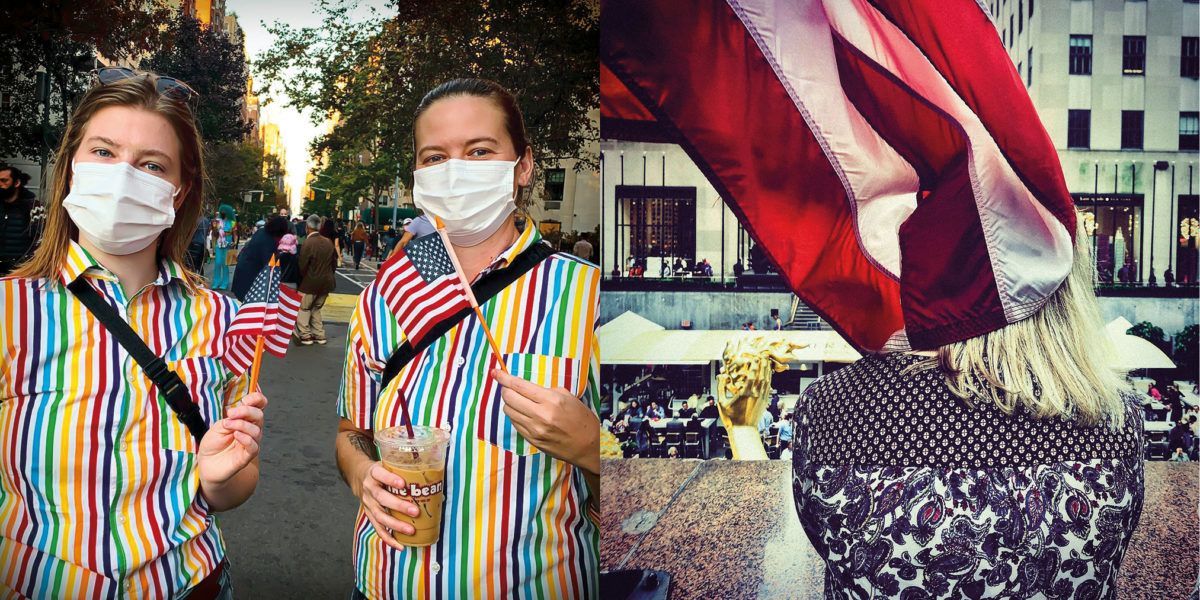
From ‘Tickety-Boo’ © Charles H. Traub
Paging through Tickety-Boo is like wading through a stream of whimsical thoughts and ideas that lead from one page to the next, then tie together related ideas six pages down the pike. Themes reveal themselves via photos of tight fabric around unassuming bellies as compared to an image of the virgin Mary, which conjures Botticelli, which in turn elicits the idea of fertility… and then photos of communal eating, one after another. Or light bulbs beneath scenes set in a shop-window… which conveys the theme of ideas and memory… all played out through the visual metaphors Traub captures and places in tandem.
Violence and violent acts, and patriotism, and memory, and collective grief – all these themes and more are reflected within the covers of this book. I see love, I see caring. I see connectedness and disparity. I see the faces of people who might live in my own community, and street scenes that are nothing like what I experience in small-town America… yet these are surely what people in a major metropolitan areas see on a daily basis. Traub plays with geometry, with line and shape and form and context (and art history inside-jokes for the geeks among us, all without the viewer realizing it), and he weaves them together in a visual narrative that is inspiring and comforting all at the same time.
“You can respond anywhere, and everywhere. And you can do so without looking like a photographer. It frees you from, as we say in New York, schlepping a lot of equipment. People just think you’re on your phone.” – Charles H. Traub to the Washington Post
Tickety-Boo might prompt the tired response, “Well, I could’ve done that.” Sure. I’ve done this. You and me, and millions of other people around the planet have shot millions upon millions of images on our iPhones each and every day. This conclusion brings to mind a statement made by the art critic Jerry Saltz, who said (paraphrasing here) that there was a lot more art made in the renaissance than what we recall. Far more than we know about, or see in museums or art history books… but a lot of it was no good. It was just bad art, and that’s why we don’t see it now. It’s gone. Saltz implies why we don’t see all that art now: it just wasn’t worth remembering. Either at the time, or soon after, and that’s why nobody kept it. It all depends on how you decide to keep and show your work. The images on my iPhone will be long gone and lost to History soon after I die. History is unkind. Tickety-Boo.
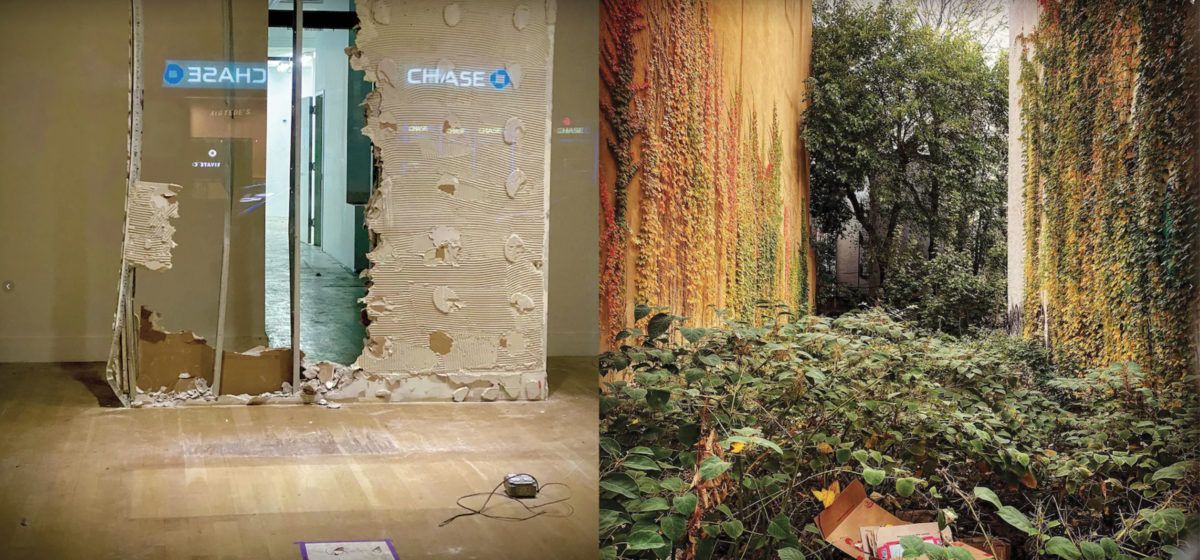
From ‘Tickety-Boo’ © Charles H. Traub
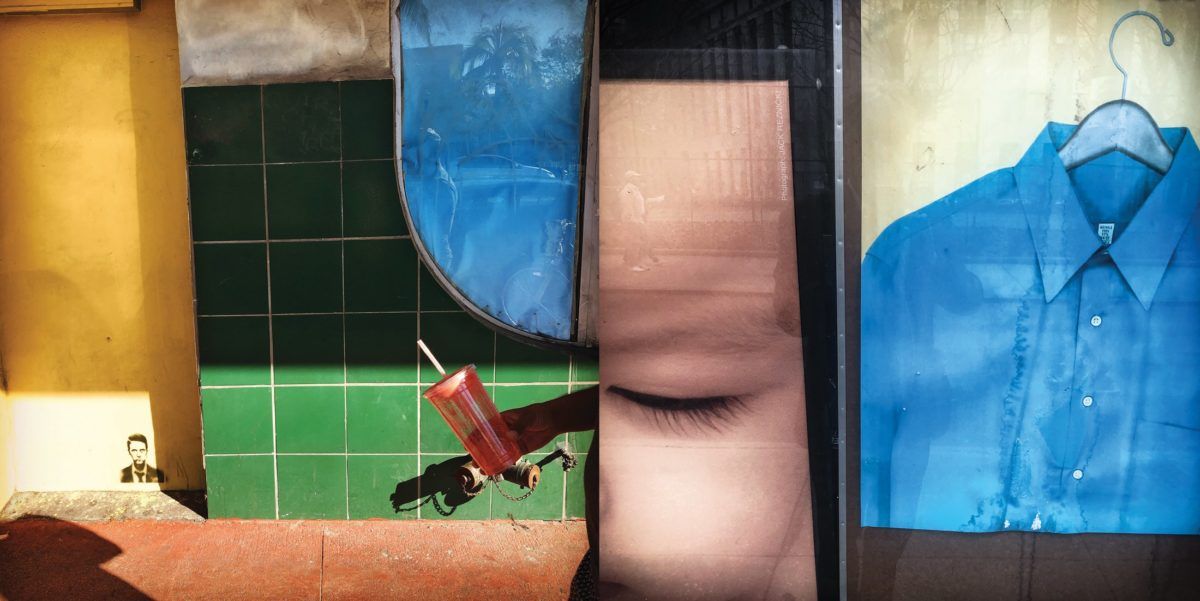
From ‘Tickety-Boo © Charles H. Traub
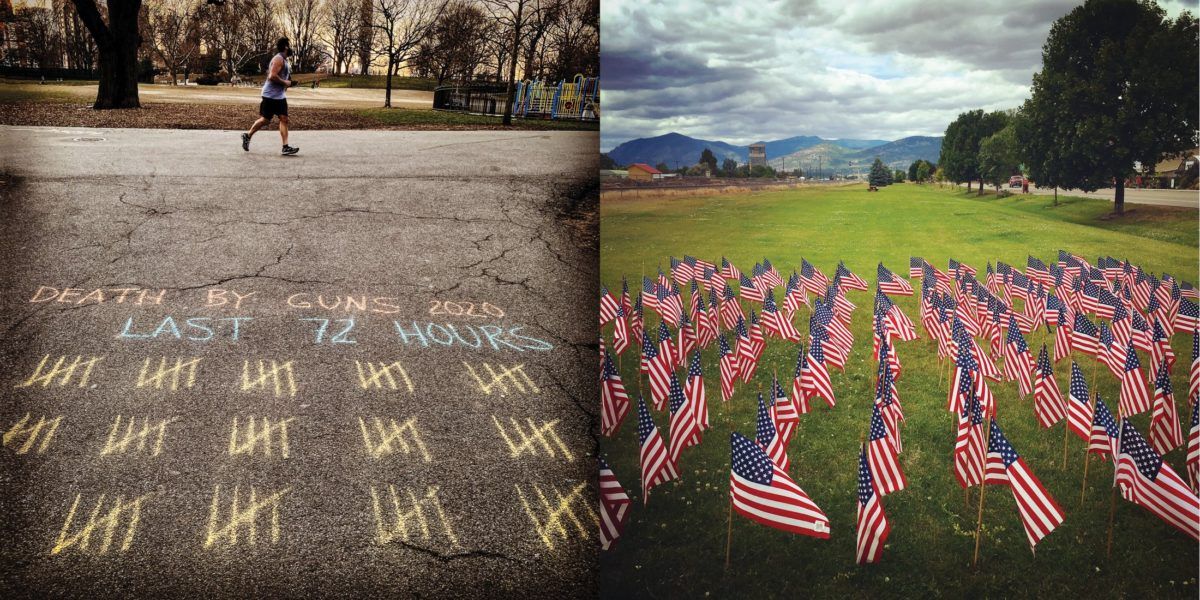
From ‘Tickety-Boo’ © Charles H. Traub
I keep coming back to parallels between Charles Traub and Kurt Vonnegut. I’ve sat with Traub’s book for months, trying to let the muse lend her voice. ‘Slaughterhouse Five’ and the parallels between Billy Pilgrim saying “And so it goes…” compared to “Tickety-Boo” is something that keeps popping up in my head, and I suppose it’s worth noting. How I can I not ignore the intersection of ideas? We all push forward despite what we see, what we endure. Tickety-Boo.
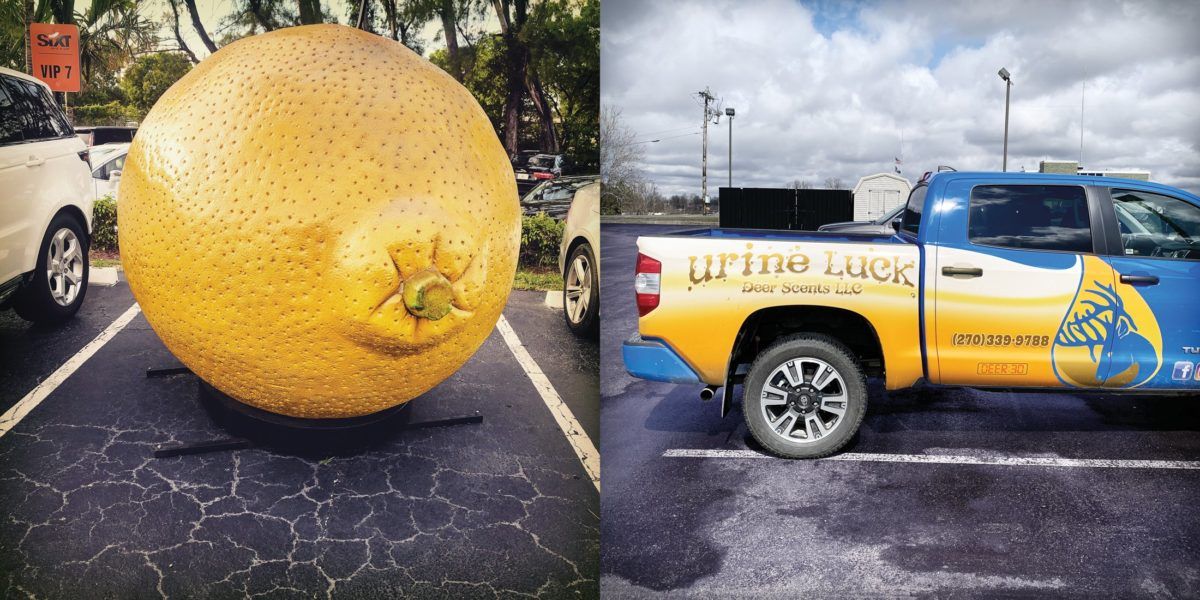
From ‘Tickety-Boo’ © Charles H. Traub
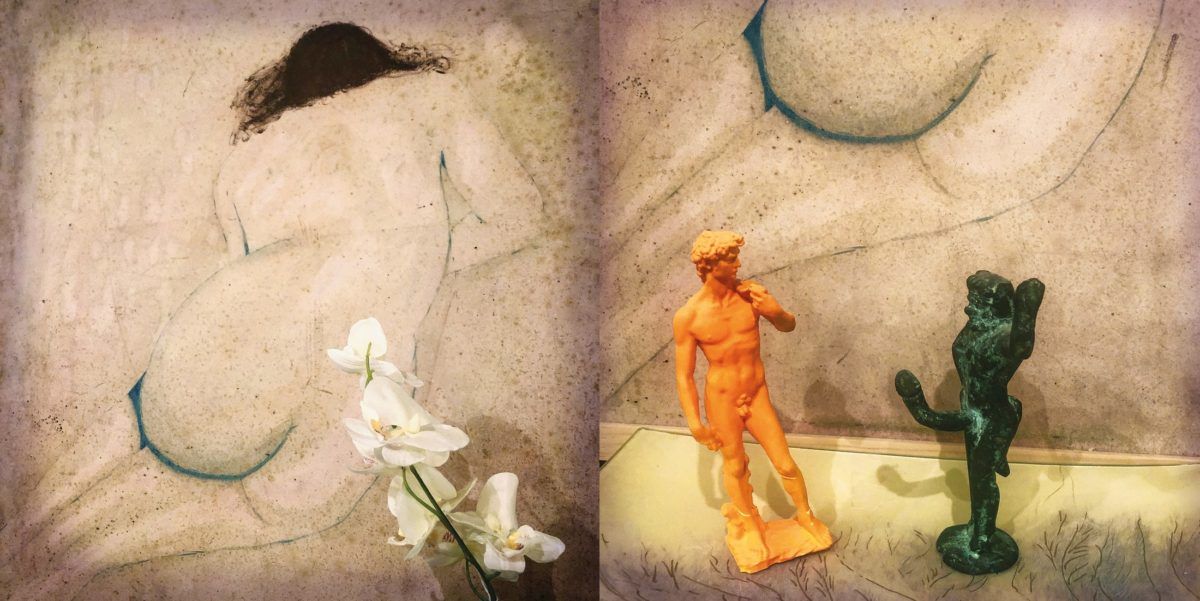
From ‘Tickety-Boo’ © Charles H. Traub
What is the relationship of the individual ‘Self’ as compared to our collective ‘Selves’ when one is viewing photography? On one hand, it is easy to surmise that what I experience as a singular person surely must be common amongst everyone else, right? Faulty logic to be sure, and yet anyone who has experienced a critique of their writing, their art, their essay in fourth grade about why they love their pet… anyone can relate to what they read, see, hear, to what they are feeling at that very moment… and why it matters. You see what you see – based on what you know when you know it. This is one of the strengths Traub puts on the printed page in Tickety-Boo. We know, as viewers, we ‘could have’ taken the same images on our phones; if we were in the same place, at the same time when Traub happened upon a woman in a tin-foil dress/coat. We ‘could have’ then placed it alongside another image we took of a person sleeping in a doorway …By the bodegas and the lights on Upper Broadway. Wearing diamonds on the soles of their shoes… but we didn’t. And so it goes.
We need to let others show us what they already know… even if we don’t know it yet. This is one of the simple, pure joys I take away from Tickety-Boo. I still find myself chuckling to myself when I turn a page to discover the whimsy and wit Traub has placed side by side. For this review, I have avoided saying things about this book like “the mundane becomes obvious” – because that would be canned ‘publisher-speak’. I will say – viewing the images within, and on the pages of this book will hopefully bring the viewer closer to everyone around them in ways they can’t explain to themselves.
::
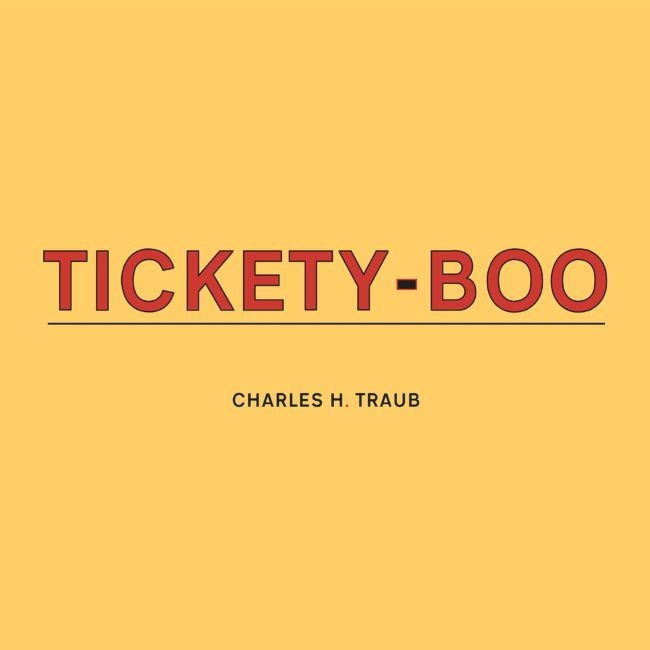
Published by Damiani
Language : English
Hardcover : 208 pages
Dimensions : 7.01 x 7.01 inches
::
Charles H. Traub was born in Louisville, Kentucky, in 1945. Early colleagues include such luminaries as Ralph Eugene Meatyard, Aaron Siskind, Arthur Siegel and Garry Winogrand. Traub taught photography at Columbia College in Chicago starting in 1971, and was responsible for helping found the Chicago Center for Contemporary Photography, which became the Museum of Contemporary Photography (MOCP). Traub’s first major body of work in color, Street Portraits, began in 1976, continued after his move to New York City shortly thereafter, and culminated in the book Lunchtime. During the 1980s in New York, Traub was a gallery director at the Light Gallery where he was instrumental in curating important exhibitions, and showcased major photographers new to the gallery: William Klein, Luigi Ghirri, Ray Metzker, Mario Giacomelli and Louis Faurer among others. Traub has dedicated himself to photographic education, is a robust influencer for the Society for Photographic Education (SPE), and has been a chairperson at the School of Visual Arts for 30 years. He has served on a number of non-profit educational boards, and is the president of the Aaron Siskind Foundation. He has had more than 60 major exhibitions in in galleries and museums throughout the world, including one-person shows at the Art Institute of Chicago, The Speed Museum, Hudson River Museum and Historic New Orleans Collection. Traub’s work is in the permanent collections of more than two dozen major museums worldwide.
Location: Online Type: Book Review
Events by Location
Post Categories
Tags
- Abstract
- Alternative process
- Architecture
- Archives
- Artist residency
- Artist Talk
- Biennial
- Black and White
- Book Fair
- Car culture
- Charity
- Childhood
- Children
- Cities
- Collaboration
- Community
- Cyanotype
- Documentary
- Environment
- Event
- Exhibition
- Faith
- Family
- Fashion
- Festival
- Film Review
- Food
- Friendship
- FStop20th
- Gender
- Gun Culture
- Habitat
- home
- journal
- Landscapes
- Lecture
- Love
- Masculinity
- Memories
- Mental Health
- Migration
- Museums
- Music
- Nature
- Night
- nuclear
- Photomontage
- Plants
- Podcast
- Portraits
- Prairies
- Religion
- River
- Still Life
- Street Photography
- Tourism
- UFO
- Wales
- Water
- Zine

Leave a Reply